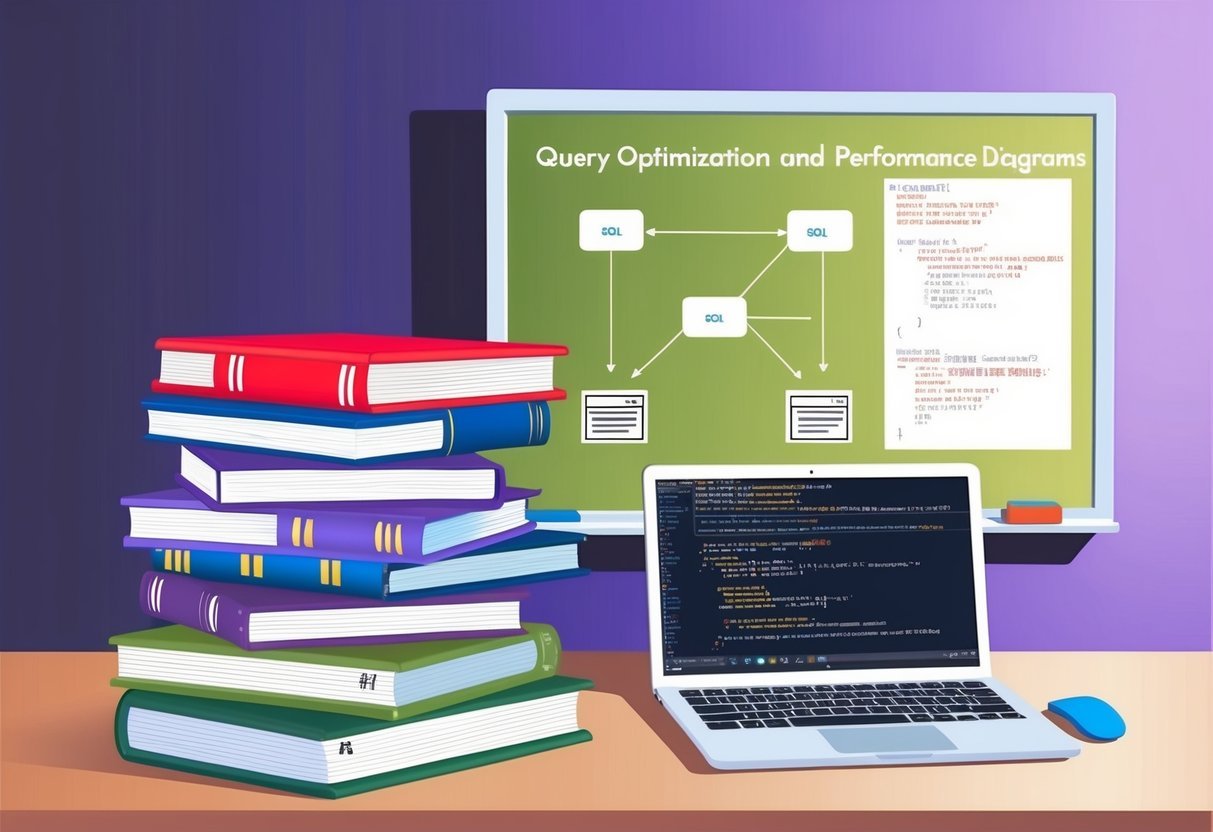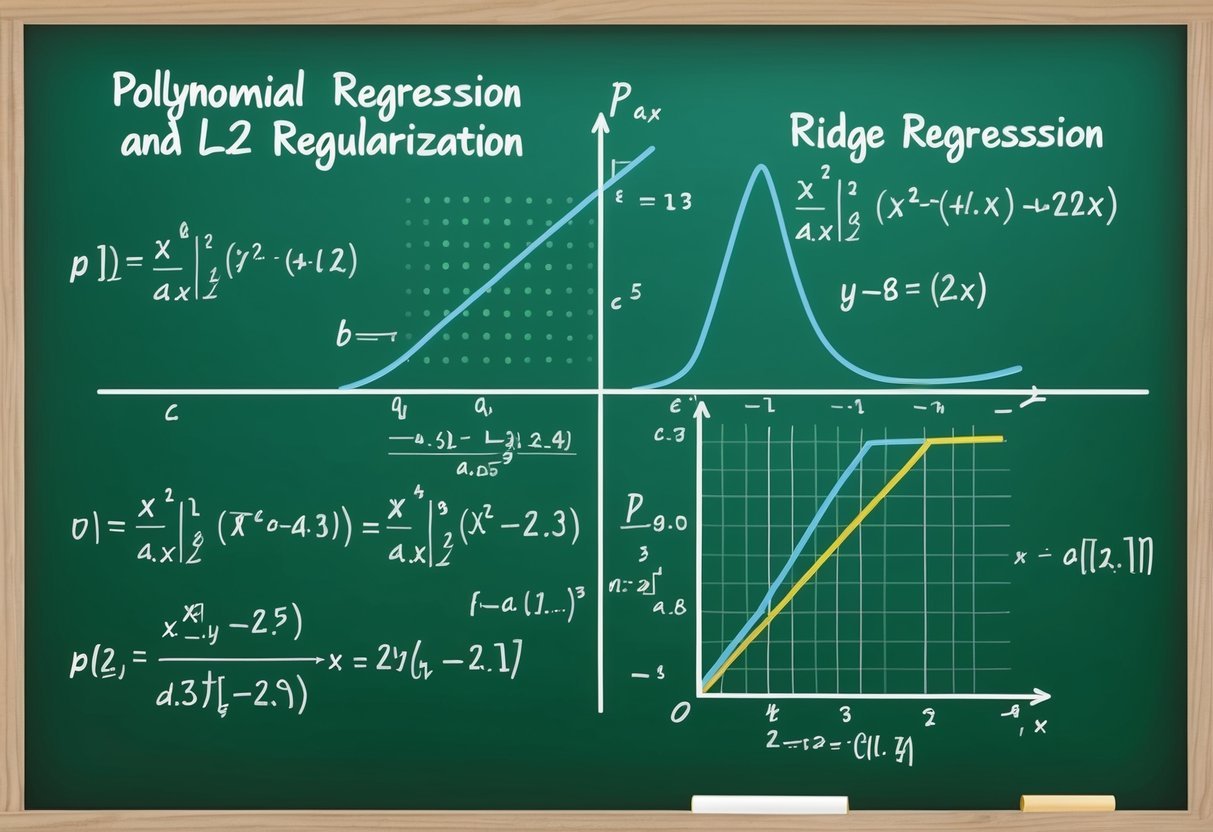Foundations of Linear Algebra
Linear algebra is a branch of mathematics essential for understanding concepts in machine learning.
At its core are vectors and matrices, which are fundamental structures in this field.
This section explores the elements of linear algebra, vectors and their spaces, and matrices with their operations.
Elements of Linear Algebra
Linear algebra involves the study of vectors, matrices, and linear equations. It forms the basis for many algorithms used in machine learning.
Vectors are entities that have both direction and magnitude, usually expressed as an array of numbers.
Matrices are rectangular arrays of numbers or functions used to represent data or solve systems of linear equations.
Key operations in linear algebra include addition, subtraction, and multiplication of matrices. Understanding these operations is crucial as it allows for manipulation and transformation of data in machine learning models.
Vectors and Vector Spaces
A vector is a mathematical object that represents both a direction and a magnitude. In machine learning, vectors are often used to represent data points or features in a model.
A vector space is a collection of vectors that can be scaled and added together to produce another vector in the same space.
Vector spaces follow specific rules and properties, such as closure under addition and scalar multiplication. They provide a theoretical framework for solving mathematical problems involving vectors, making them foundational to areas like neural networks and support vector machines.
Matrices and Matrix Operations
Matrices are essential in linear algebra, used to store and manipulate data. The operations involved, such as matrix addition, subtraction, and multiplication, are key to processing complex algorithms in machine learning.
Matrix multiplication is especially important, as it allows for the transformation of data from one form to another.
Matrix inversion and determinant calculation are also critical. These operations enable the solution of linear equations and are widely applied in fields like optimization and statistics. Understanding these operations is vital for anyone looking to master the algebraic underpinnings of machine learning.
For a detailed exploration of how matrix algebra is applied in AI, continue researching more extensive sources. The associativity property of matrix multiplication is an interesting aspect offering deeper insights into computational efficiency, as explained in the context of linear algebra basics for machine learning.
Matrix Calculus in Machine Learning
Matrix calculus is crucial in training neural networks, as it’s used for calculating derivatives of functions with respect to matrices. These calculations are the foundation for optimization, allowing models to learn effectively.
Derivatives and Gradients
Understanding the derivatives in matrix calculus is essential for machine learning. It involves finding how small changes in input matrices affect the function output, which is vital in tweaking neural network weights.
Gradients, which are vectors of partial derivatives, help in determining the direction and rate of change in a multi-variable function. The process of computing gradients for matrices allows models to adjust weights during training, leading to improved accuracy. Without calculating these matrix derivatives, machine learning algorithms would struggle to learn and adapt effectively.
Chain Rule and Backpropagation
The chain rule in calculus helps break down the derivative of composite functions into simpler parts. In neural networks, this is key for backpropagation, the method used to train the models.
Backpropagation applies the chain rule to calculate errors through the layers of a network, adjusting weights accordingly. This adjustment helps in minimizing the difference between predicted and actual outputs, improving model performance. Matrix calculus enhances the efficiency of these operations, making complex calculations more manageable. This is why understanding both the chain rule and backpropagation is critical for anyone working in this field.
Key Matrix Properties
Understanding matrix properties like determinants and eigenvalues is crucial in fields such as machine learning and linear algebra. These properties can help explain how matrices behave and interact in mathematical models.
Determinants and Inverse Matrices
The determinant of a matrix is a scalar value that provides important information about the matrix, including whether it is invertible. If the determinant is zero, the matrix is singular, meaning it does not have an inverse.
Inverse matrices are critical when solving systems of linear equations, as they provide a way to express solutions.
These concepts are also useful in linear transformations. The determinant helps determine if a transformation is volume-preserving. Additionally, in tensor calculations, determinants can indicate the orientation and scaling of a transformation, which is vital for understanding the behavior of complex mathematical models.
Eigenvalues and Eigenvectors
Eigenvalues and eigenvectors are fundamental in understanding a matrix’s behavior in transformations. An eigenvalue is a scalar that indicates how much an eigenvector is stretched or compressed during a transformation. On the other hand, an eigenvector remains unchanged in direction after the transformation is applied.
These concepts are crucial in machine learning applications. They help simplify complex systems by reducing dimensions and identifying significant features. In the context of tensors, eigenvalues and eigenvectors aid in decomposing mathematical objects into simpler, more manageable forms. This decomposition is essential for advanced data analysis and visualization techniques.
Algebraic Structures and Computations
Algebraic structures play an important role in computations related to machine learning. They help simplify complex problems by breaking them down into more manageable parts using systems of linear equations and matrix factorizations.
Systems of Linear Equations
Systems of linear equations are fundamental in algebra and machine learning. They allow us to find values for variables that satisfy multiple conditions.
In linear algebra, these systems are described using matrix notation, where the solutions can represent important model parameters.
Solving these systems involves techniques like Gaussian elimination or matrix inversion. Efficient solutions are crucial when dealing with large datasets. Machine learning often involves optimizing weights and biases, which can be framed as solving a set of linear equations. Understanding these principles is vital for tasks such as regression or classification models.
Matrix Factorizations
Matrix factorizations are used to break down matrices into simpler components, making it easier to handle computations. A common example is the Factorization of a matrix into its constituent parts, such as LU decomposition or singular value decomposition (SVD).
These methods help solve problems involving large datasets efficiently, which is a common requirement in machine learning.
In linear algebra, these techniques are used to find approximate solutions and reduce complexity. For example, SVD is often applied in dimensionality reduction, which simplifies the data without losing significant information. This is especially important for tasks like image compression or natural language processing, where reducing the number of features can boost performance while maintaining accuracy.
Probability and Statistics for Machine Learning

Probability and statistics are essential for creating and understanding AI systems. They allow us to analyze data effectively and make predictions.
Statistical Foundations
Statistics provide tools for understanding data patterns. Key concepts include mean, median, and mode, which represent central tendencies in a dataset. Standard deviation and variance measure data spread.
Inferential statistics are crucial in AI. They allow predictions about populations based on sample data. Techniques like hypothesis testing help determine the significance of patterns. Understanding these basics is vital for machine learning models to understand and predict data behavior.
Probability Theory in AI Systems
Probability theory helps deal with data uncertainty. Terms like random variables, probability distributions, and Bayesian inference are used frequently in AI.
Conditional probability is important when predicting outcomes based on specific conditions. Machine learning relies on these principles for model training and decision-making. By calculating likelihoods and probabilities, AI can learn to make informed decisions, a fundamental aspect of intelligent systems.
Numerical Methods and Optimization
Numerical methods and optimization are crucial in improving machine learning models. These methods handle complex mathematical problems common in large-scale computations. The use of calculus, linear algebra, and matrix operations assists in creating efficient optimization techniques.
Large-Scale Optimization Techniques
Large-scale optimization is essential for handling massive datasets. Techniques like stochastic gradient descent (SGD) efficiently tackle these problems by updating parameters in small batches. In contrast, traditional methods like gradient descent require processing the entire dataset, which is often impractical for large data.
Matrix operations play a critical role in optimization. By leveraging matrix algebra, these operations streamline computations, reducing the time and resources needed. This approach allows for parallel processing and easier handling of high-dimensional data. Practical applications often use libraries that support optimized matrix computations, enhancing the overall performance of machine learning algorithms.
Calculus on Arbitrary Vector Spaces
Calculus on arbitrary vector spaces extends traditional calculus concepts to more general settings. This approach allows for differentiation and integration over vector spaces, which are critical in optimization problems.
In vector spaces, techniques such as inner products and norms help measure and minimize errors. This is particularly useful in optimizing machine learning models, where minimizing the error is crucial for accuracy. By applying linear algebra and matrix theory, calculus on vector spaces facilitates the creation of algorithms that are both efficient and scalable, making it a valuable tool in machine learning.
Computer Science Applications
Computer science uses math in many ways, especially in fields like data structures and computer vision. These areas rely on matrix properties to solve complex problems and build efficient systems.
Data Structures and Algorithms
In computer science, data structures are essential for organizing and storing data efficiently. Algorithms that operate on these structures often involve matrices, especially in tasks like graph theory and network flow analysis.
Matrices are used to represent graphs where nodes and edges can be analyzed mathematically. Adjacency matrices and incidence matrices help in modeling network connections and paths. Operations like matrix multiplication can reveal shortest paths or clusters in data. These applications of matrices ensure better optimization and functionality in computing processes.
Computer Vision and Image Processing
Computer vision leverages matrix properties to enhance image processing tasks. Convolutional neural networks (CNNs), used in deep learning, require matrix operations to analyze and interpret images.
Matrix transformations such as translation, scaling, and rotation adjust and understand image data efficiently. Feature extraction, a critical step in image analysis, uses matrices to detect edges, patterns, and textures. By applying these methods, computers can recognize and categorize visual information accurately.
For more about these methods, visit the study on matrix algebra in AI.
Practical Coding in Python

Practical coding in Python is essential for data science and machine learning. It involves understanding how to perform numerical computations and manage data efficiently using Python libraries.
Utilizing Numpy for Numerical Computations
Numpy is a fundamental library in Python used for numerical calculations. It offers support for arrays and matrices, which are central in machine learning.
Using Numpy, one can execute mathematical operations efficiently, enabling the handling of large data sets without cumbersome loops.
A distinctive feature of Numpy is its ability to perform operations on entire arrays. This capability makes computations faster and more intuitive. The element-wise operations allow users to apply functions over arrays without writing complex code. Additionally, Numpy supports a wide range of mathematical functions, making it indispensable for anyone in data science.
Machine Learning Libraries and Data Handling
Python offers several machine learning libraries, such as Scikit-learn, TensorFlow, and PyTorch. These frameworks provide pre-built functions to streamline machine learning processes. Scikit-learn is popular for its simplicity and efficiency in implementing standard models.
Efficient data handling is crucial. Libraries like Pandas complement machine learning tools by allowing data manipulation and analysis. Data scientists utilize Pandas for tasks like filtering data, computing statistics, and managing missing data. By integrating these tools, users can seamlessly preprocess and transform data, ensuring it is ready for machine learning models. This combination supports rapid development and testing of models in machine learning projects.
Mathematics in Real-World Applications
Mathematics plays a crucial role in tackling real-world problems using machine learning. It finds applications in fields like image recognition and natural language processing. Key mathematical concepts include dimensionality reduction techniques and applications in deep learning, which utilize matrix properties.
Dimensionality Reduction Techniques
Dimensionality reduction helps manage large datasets by reducing the number of variables under consideration. Principal Component Analysis (PCA) is a popular technique. It transforms data into new dimensions, using eigenvalues and eigenvectors of a covariance matrix to identify patterns. This method simplifies data, preserving essential features while reducing noise.
Topological data analysis is also significant. It uses shapes and connectivity information from data to better understand structures. These techniques are vital for efficient data processing, enabling faster computation and storage, particularly when handling large-scale datasets in various real-world use-cases.
Applications in Deep Learning
Deep learning relies heavily on matrix operations. Neural networks, arranged in layers, utilize matrices to perform operations like weight multiplication and activation functions. These processes are central to tasks such as image classification and speech recognition.
For instance, convolutional neural networks (CNNs) excel at image processing by detecting patterns through matrix filters. Backpropagation, another key process, uses matrix calculus to update weights in the network. This mathematical foundation allows for successful implementation of AI in diverse applications, linking high-level algorithms to practical solutions.
Mathematics Pedagogy for ML Practitioners
Teaching math for machine learning involves balancing traditional methods with modern techniques. Educators focus on foundational skills to ensure students grasp complex concepts. Various resources and practice techniques help facilitate understanding.
Traditional vs Modern Teaching Approaches
Traditional mathematics pedagogy often emphasizes procedural fluency and repetitive problem-solving. Students learn through lectures, textbooks, and structured problem sets. This approach helps build a solid foundation in mathematical concepts, critical for understanding machine learning algorithms.
Modern teaching integrates technology and interactive methods, focusing on critical thinking and application. Interactive online platforms and visual tools make complex topics, like matrix transformations, easier to understand. The blend of traditional and modern techniques ensures students can both understand the theory and apply it in practice.
Learning Resources and Practice Techniques
Learning resource types vary widely for ML practitioners. They include textbooks, online courses, and interactive simulations. Each offers unique advantages. Textbooks provide in-depth exploration, while online platforms offer flexibility and up-to-date content.
Problem sets with solutions are essential for building skills. Practitioners benefit from solving real-world problems to understand machine learning applications. Practice techniques such as peer collaboration and hands-on projects further enhance learning. These strategies ensure that learners not only know the math but can apply it effectively in projects or research.
Advanced Topics in Mathematics

Advanced mathematics plays a crucial role in machine learning. Understanding vector calculus and topology is essential for developing and optimizing machine learning algorithms. These topics provide the foundation for more complex mathematical operations and theories used in data-driven environments.
Vector Calculus
Vector calculus is vital for machine learning as it extends the concepts of calculus to vector fields. It’s used in areas like gradient descent, which is crucial for optimizing algorithms.
Gradient descent relies on calculating gradients, which are vectors indicating the direction of the steepest ascent in a function. This helps in finding local minima, a common task in training machine learning models. Understanding divergence and curl also supports the comprehension of fluid dynamics and electromagnetism, relevant in various machine learning applications.
Topology and Its Importance
Topology studies the properties of space that are preserved under continuous transformations. It plays a key role in understanding complex datasets by focusing on spatial properties and relationships between different points in data.
Topological data analysis (TDA) is a technique that uses topology to extract features and patterns in high-dimensional data. This is important in machine learning for uncovering structures not apparent with traditional methods. TDA helps in clustering, dimensionality reduction, and understanding the shape and connectivity of data points, thus improving model performance.
Frequently Asked Questions

Matrix properties and operations are vital in machine learning for building models and implementing algorithms effectively. Understanding these concepts is crucial for grasping the mechanics of various machine learning models.
What are the essential matrix properties and operations used in machine learning?
In machine learning, matrices serve as the foundation for representing data. Key operations include matrix addition, subtraction, and multiplication. Properties like determinants, ranks, and inverses help in solving systems of equations and transforming data.
How does matrix multiplication apply to algorithm implementations in machine learning?
Matrix multiplication is used to combine data and weights in neural networks. It transforms input features through layers, producing outputs efficiently. This operation is vital for tasks like predicting outcomes and training models.
Why is linear algebra critical for understanding and applying machine learning models?
Linear algebra forms the backbone of machine learning because it provides the tools to model and process complex data. Concepts like vector spaces and linear transformations enable understanding of algorithms like linear regression and support vector machines.
What is the significance of eigenvalues and eigenvectors in machine learning applications?
Eigenvalues and eigenvectors are crucial for dimensionality reduction techniques like Principal Component Analysis. They help simplify datasets by identifying principal components, making computations more efficient and revealing underlying data patterns.
How do feature matrices play a role in the development of machine learning models?
Feature matrices organize input data for machine learning algorithms, representing samples and their attributes. This structure is essential for preprocessing data and feeding it into models, enabling them to learn and make predictions.
What advanced matrix concepts should one be familiar with for deep learning tasks?
In deep learning, advanced matrix concepts like singular value decomposition and random matrix theory may be useful. These tools can help optimize neural networks and handle large datasets efficiently. Understanding these concepts can improve model performance and stability.
























































